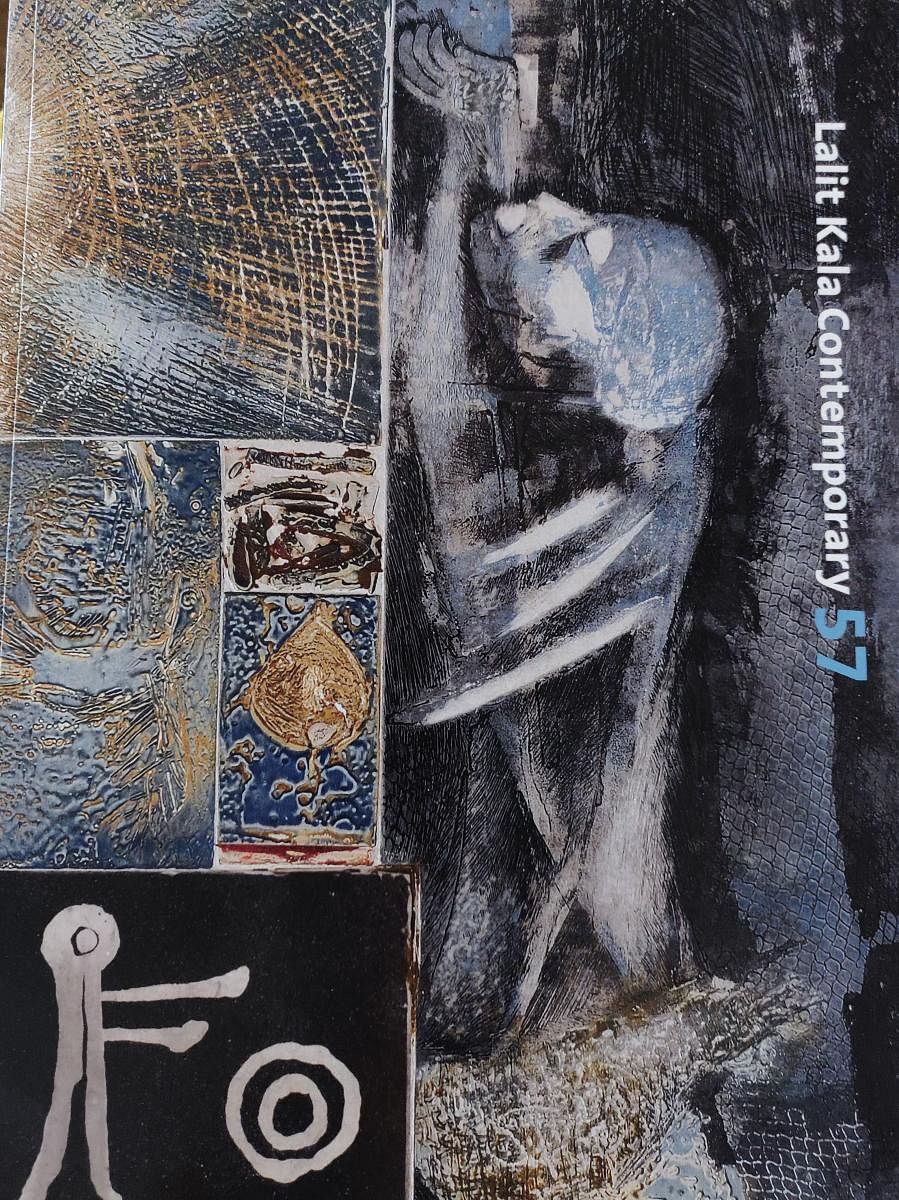
The recently concluded edition of the ‘2nd Print Biennale India (International Exhibition of Graphic Prints)’, organised by the Lalit Kala Akademi, New Delhi, contributed significantly towards rekindling interest in the medium — both within the fraternity and in art connoisseurs. The biennale was launched in 2018, when senior artist C S Krishna Setty, from Karnataka, was the administrator of the Akademi and played an instrumental role in driving it.
The second edition comprised a travelling show along with other activities and events in parallel that augmented efforts toward renewing interest around the age-old practice. The graphic works from the biennale were showcased at Jehangir Art Gallery, Mumbai in December last year, and subsequently, these works were exhibited recently at the Karnataka Chitrakala Parishath galleries, in Bengaluru. Apart from the 149 artworks by artists from India and abroad, an invitee section and select works by noted artist Somnath Hore (presented to commemorate his birth centenary year), were also displayed. Incidentally, the event also coincided with celebrations around 75 years of India’s independence under the ‘Azadi ka Amrit Mahotsav’ initiative.
The invitee section featured prints by eminent printmakers and artists Anupud Sud, Jyoti Bhatt, Sanat Kar, Krishna Reddy, and Laxma Goud; Devraj Dakoji, among others, was a thoughtful addition. Although the number of works from these senior artists was limited due to obvious constraints, the display offered a valuable glimpse into their practice and added depth to the entire event.
The exhibition overall gave insights into the use of printmaking as a medium — in its traditional format as well as in combination with newer adaptations, techniques, and use of technology. Its evolution and current interpretations were interesting to note, and the works by the international participants added cultural and geographical specifics to the heterogeneity of the show.
Evolution
In addition, the Akademi, in collaboration with Karnataka Chitrakala Parishath, organised a national printmaking camp with 20 artists from across the country at the Parishath campus in Bengaluru, and these works were then put up on display. ‘Contemporary’, one of the publications by the Akademi, was also launched along with the second edition of the print biennale and it has dedicated an entire volume to printmaking in India. The journal offers an overview of printmaking in India, discusses its history, evolution, and future, along with social and regional narratives that have impacted printmaking in the country.
In short, this has been a productive exercise that focuses on reviving printmaking through a multipronged approach.
It spotlights the medium and encourages audiences to engage with it. As momentum builds and we emerge from the pandemic, it would be great to see larger countrywide initiatives, further documentation, and coverage of a wider spectrum of printmaking practices and artists.
Printmaking, in general, requires ample infrastructure and financial support to make it feasible. Right from funding to opportunities for collaborations, display, and sale, such efforts must be sustained to ensure that printmaking continues as a viable artistic expression that remains accessible to all.
The author is a Bengaluru-based art consultant, curator, and writer. She blogs at Art Scene India and can be reached on artsceneinfo@gmail.com
Dab Hand is your art world low-down. It will tell you all about what fresh ideas are out there, what to collect and what to admire from afar. And, of course, what not to.